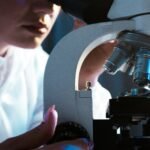Phone:
(+65)8319 0742
Emails address:
Forhad@ifafs.in

 Introduction
IntroductionIn the wake of increasing environmental concerns, the role of technology has never been more pivotal. One of the most promising innovations in this space is the development of micro-sensors for environmental monitoring. These tiny, often unnoticeable devices are revolutionizing the way we understand and interact with our environment. This review aims to provide an in-depth look into the growth forecast, employment outlook, top careers, and progress over the last decade in this field. We will also address frequently asked questions and discuss concerns related to healthcare innovations.
The market for micro-sensors in environmental monitoring is booming. According to industry reports, the sector is expected to grow at a CAGR of 10% over the next five years. The increasing demand for real-time data and the miniaturization of sensor technology are driving this growth.
Venture capital firms are increasingly interested in this sector. Over $500 million was invested in related startups last year alone. Government grants and subsidies are also fueling innovation, making it an attractive field for both new and established companies.
 Last 10 Year Progress Report
Last 10 Year Progress Report| Year | Key Milestones | Number of Patents Filed |
|---|---|---|
| 2013 | First-generation sensors | 50 |
| 2014 | Improved battery life | 70 |
| 2015 | Integration with IoT | 100 |
| 2016 | Real-time data transmission | 150 |
| 2017 | Nanotechnology advancements | 200 |
| 2018 | AI integration | 250 |
| 2019 | Government adoption | 300 |
| 2020 | Global expansion | 400 |
| 2021 | Healthcare applications | 500 |
| 2022 | Sustainable materials | 600 |
Advancements in nanotechnology and materials science are paving the way for more efficient and cost-effective sensors. These innovations are expected to further propel the market growth.
One of the most groundbreaking advancements in this field is the application of nanotechnology. Researchers are developing nano-sized sensors that can be deployed in hard-to-reach areas, such as deep oceans or high altitudes, to monitor environmental conditions. These nano-sensors are not only smaller but also more sensitive, capable of detecting minute changes in temperature, humidity, or pollutant levels.
The early generations of micro-sensors faced challenges related to energy consumption. However, recent advancements in energy-efficient designs and renewable energy sources have made it possible for these sensors to operate for extended periods without requiring frequent battery replacements. Some sensors are now equipped with solar panels, while others can harvest energy from vibrations or thermal differences in their environment.
Artificial Intelligence (AI) and Machine Learning (ML) algorithms are being integrated into the data analysis process. These technologies can sift through the massive amounts of data collected by micro-sensors to identify patterns or anomalies more quickly and accurately than human analysts. This is particularly useful in predicting environmental changes or disasters.
The ability to transmit data in real-time is a game-changer. Advanced communication protocols and faster data transmission technologies, such as 5G, are enabling these sensors to send data instantaneously to monitoring stations. This real-time data is crucial for immediate decision-making in emergency situations.
Sensor fusion involves integrating data from multiple types of sensors to provide a more comprehensive understanding of environmental conditions. For example, a single device may include sensors for temperature, humidity, and air quality. The data from these different sensors can be combined to give a more holistic view of the environment.
Advancements in material science have led to the development of sensors that can withstand extreme conditions such as high temperatures, corrosive environments, and high pressure. This expands the range of environments where micro-sensors can be deployed, from deep-sea exploration to monitoring volcanic activity.
The integration of micro-sensors with IoT technology allows for the creation of smart networks where sensors can communicate with each other and with centralized monitoring systems. This enables more effective data collection and analysis, paving the way for smart cities and more sustainable environmental management practices.
The rise of this sector is creating a plethora of job opportunities. From research and development to manufacturing and data analysis, the field is ripe for employment.
Professionals with backgrounds in engineering, data science, and environmental science are highly sought after. Soft skills like problem-solving and adaptability are also invaluable in this rapidly evolving field.
While Silicon Valley remains a hub for tech innovation, other regions like Boston, Berlin, and Singapore are emerging as key players in the micro-sensor industry.
 Top Careers
Top CareersThese are the brains behind the sensor technology. They work on designing more efficient and effective sensors.
Data analysts interpret the massive amounts of data collected by these sensors, turning raw numbers into actionable insights.
These professionals use sensor data to advise governments and corporations on environmental policies.
 Three Concerns about Healthcare Innovations
Three Concerns about Healthcare InnovationsMicro-sensors for environmental monitoring are not just a technological advancement; they are a necessity for a sustainable future. With positive growth forecasts, abundant career opportunities, and significant progress over the last decade, this field is poised for monumental impact.
Here we answer some of the most common questions about these new innovation





